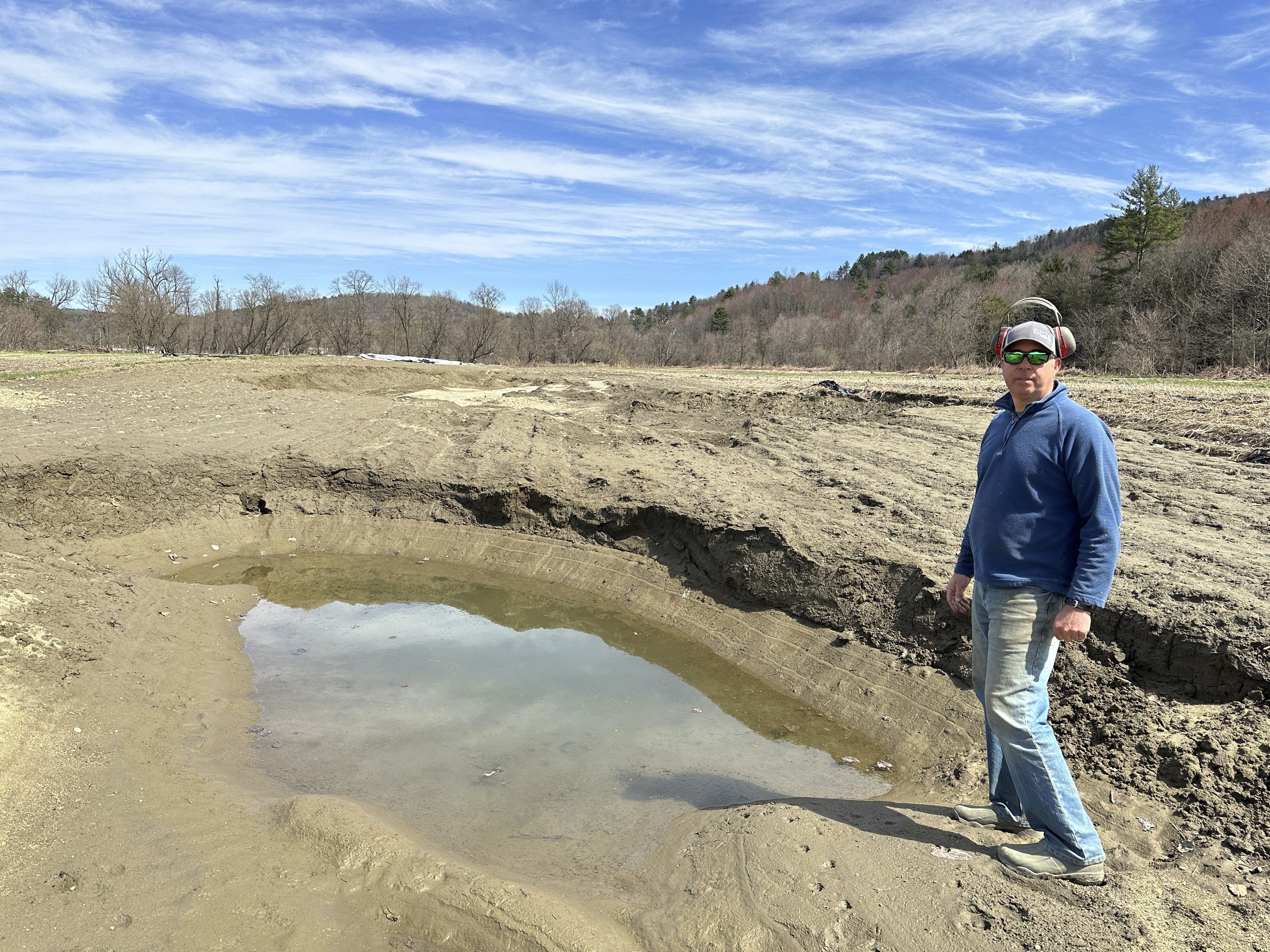The rarely-seen timber rattlesnake is struggling to survive in the woods and mountains of New England. Massachusetts, New Hampshire, Vermont, and Connecticut have listed the venomous snake as endangered, and scientists believe the animals are extinct in Maine and Rhode Island.
The Vermont Fish and Wildlife Department has a goal of conserving the state's remaining timber rattlesnakes. It estimates the population in the very low hundreds. "They're in dire straits," said Doug Blodgett, a wildlife biologist with the Vermont Fish and Wildlife Department.
Blodgett said the species you would expect in Texas or Oklahoma was widespread in the Northeast in Colonial times. "They're the original Vermonters," he said.
Blodgett said historically, the rattlers' fangs long made them targets for extermination.
"I can't think of an animal that is more held in greater contempt or persecuted to the extent that this one is," Blodgett noted. "Just because we may not understand them or we may not particularly like or enjoy a particular species is not the reason to get rid of it."
Fish and Wildlife researchers regard the rattlesnakes as an important part of the ecosystem. They eat rodents, including mice that can carry Lyme disease, Blodgett said.
"We're not saying everyone should love these animals," he explained. "We're just looking to replace some of the fear with more knowledge and understanding, so people can know the snakes aren't a threat to them, and to improve the animals' chances of survival."
Vermont
The latest news from around the state
Blodgett took necn on a research trip deep into the woods of Rutland County, to one of only two spots in the state where the rattlesnakes are known to live. He found two timber rattlesnakes, explaining they were a possible mating pair.
"In my mind, this is the ultimate symbol of wildness remaining in Vermont," he said, looking at the coiled snakes.
Blodgett said most often, timber rattlesnakes are shy and retreating, and merely want to be left alone to sun themselves. Since they're so rare, and so out of the way, there's no real threat to the public, Blodgett insisted. He said bites to humans here are essentially unheard of.
"The biggest misconception is they're wandering around like a marauder in the forest looking for someone to eat," Blodgett said. "Nothing could be further from the truth."
Studies using implanted tracking devices have traced the animals' patterns. Blodgett's colleagues have learned the rattlers make short trips out of their dens during the warmest months until retreating deep underground to survive Vermont's brutal winters.
"It's a strong genetic trait," Blodgett said of the snakes' ability to survive in Vermont's hot summers and bitterly cold winters. "And I think it's the kind of genetic strength we should keep around."
The Vermont Fish and Wildlife Department still wants to do more research on the snakes, namely on their infrequent reproduction, and examinations into a newly-arrived fungus that grows on their faces. "It's often lethal," Blodgett said of the fungus.
Necn agreed to not reveal the exact location of the rattlers, for their protection. The biologists said the snakes are so stressed, they don't need humans poking around their nests or trying to profit off a black market for them. Along with illegal collection or killing of the endangered snakes, another challenge is habitat loss, to construction.
Murray McHugh with The Nature Conservancy said the organization bought land in Vermont that is home to the rattlers and other delicate animals and plants, closing it to the public and protecting it from ever becoming a strip mall or cul-de-sac.
"You're protecting the web of life," McHugh said of nature conservation. "Everything is connected in these natural systems, in these ecosystems. So by taking out one species, you're actually disrupting the system. And the results may be bad."
Doug Blodgett acknowledged ecology can be a tough concept for the public to get behind when it comes to a venomous species, but with New England's timber rattlesnakes teetering on the brink of extinction, he vowed to spend much of his life protecting theirs.
"They deserve a place here," Blodgett said.
Even though human encounters with timber rattlesnakes are very rare, biologists remind people the animals are venomous, so no one should try to handle them. Instead, trained response teams will come to your property to safely remove the snakes. Your state's local fish & wildlife office should have helpful information on approval removal experts.



